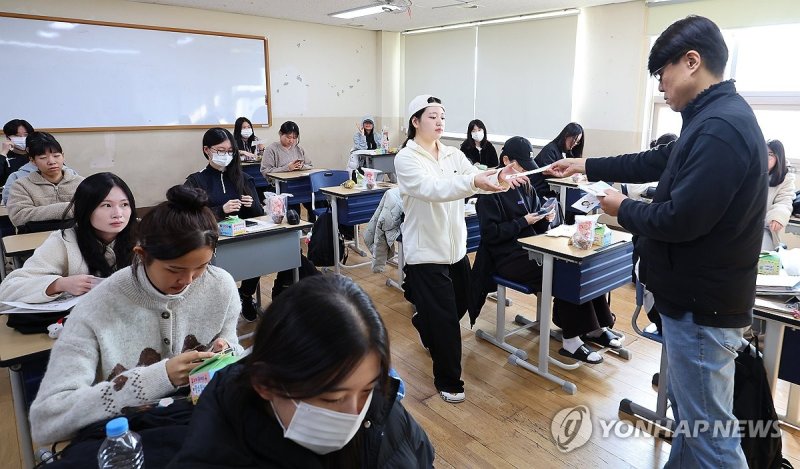'The Decisive Day: 550,000 Take the CSAT'... Policy to Exclude 'Killer Questions' Maintained
- Input
- 2025-11-13 05:32:27
- Updated
- 2025-11-13 05:32:27

[Financial News] The 2026 College Scholastic Ability Test (CSAT) will begin simultaneously on the 13th at 1,310 test sites across 85 districts nationwide.
Test-takers must enter their designated examination rooms by 8:10 a.m.
As with last year, this year's CSAT will proceed in the following order: Korean Language in the first period, Mathematics in the second, English in the third, Korean History and Inquiry (Social Studies, Science, Vocational Studies) in the fourth, and Second Foreign Language/Classical Chinese in the fifth.
For most examinees, the test starts at 8:40 a.m. and ends at 5:45 p.m.
The Integrated CSAT for Humanities and Sciences, introduced in 2022, will continue this year.
The Korean Language and Mathematics sections will follow the Common Subjects + Elective Subjects Structure.
In the Korean Language section, students must choose one elective—either 'Speech and Composition' or 'Language and Media'—in addition to the common subjects of Reading and Literature.
In Mathematics, students will take Mathematics I and II as common subjects and select one elective from 'Probability and Statistics,' 'Calculus,' or 'Geometry.'
The Korean History section remains mandatory for all test-takers. Those who do not take this section will have their results invalidated and will not receive a score report.
For Social Studies and Science Inquiry, students may select up to two subjects from a pool of 17, regardless of category. In the Vocational Inquiry section, up to two subjects can be chosen from six available.
If two subjects are selected in the Vocational Inquiry section, 'Successful Vocational Life,' a specialized common subject, must be included.
For the Second Foreign Language/Classical Chinese section, students may choose one out of nine subjects.
The English, Korean History, and Second Foreign Language/Classical Chinese sections will be graded on an absolute scale, with only grades indicated.
The policy to exclude so-called 'killer questions' (ultra-difficult items) will also remain in place.
The Korea Institute for Curriculum and Evaluation (KICE) has emphasized that questions will be set according to the content and level of the high school curriculum.
A key variable this year is the strengthening of the 'Satam Run' phenomenon, where students aiming for science and engineering majors opt for Social Studies Inquiry instead of Science Inquiry, as some major universities now recognize Social Studies as a minimum CSAT requirement for natural sciences departments.
A total of 554,174 students have registered for this year's CSAT, an increase of 31,504 (6.0%) from last year. This is the largest number of test-takers since 2019, when 594,924 sat for the exam.
Among them, 371,897 (67.1%) are current students, up 31,120 from last year, and 22,355 (4.0%) are other applicants such as those who passed the qualification exam, an increase of 2,246. The number of graduates is 159,922 (28.9%), a decrease of 1,862.
The number of current student examinees surged by 9.1% (31,120) compared to last year, as students born in 2007—the Year of the Golden Pig, which saw an unusually high birth rate—entered their final year of high school and took the CSAT.
With the number of medical school admissions for the 2026 academic year returning to the pre-increase level of 3,016, the number of repeat test-taker examinees has decreased compared to last year (161,784), but remains high compared to the recent average of 120,000–130,000.
Score reports will be distributed to test-takers on December 5.
jjw@fnnews.com Jung Ji-woo Reporter